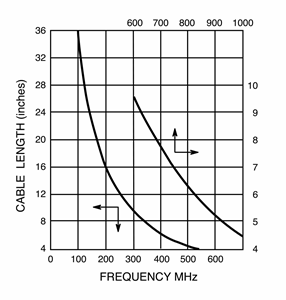
Model 43 in a Mismatched Line
Posted 01/09/2020 by Bird RF Engineer
THRULINE instruments are directional insertion wattmeters for 50-ohm RF coaxial transmission lines. They measure RF power flow in either direction accurately under any load condition. Since the instrument with its two connectors has a voltage standing wave ratio of less than 1.05, any error contributed by its insertion in a line is negligible (less than 0.06%). When a “43” is used to match a load to a transmitter and a good match is obtained, removing the instrument will not cause any change in the conditions, since a good 50-ohm load can be placed at the end of a 50-ohm transmission line of any length without altering conditions at the transmitter.
What happens when the load is not well matched, like an antenna with a VSWR of 1.5 or 2.0? Since the length of the line between a mismatched load and the source transforms the impedance of the load as seen at the source, line length now becomes critical. If the adjustments for maximum power transfer were made with a 43 in place, removing it shortens the line by 4 inches, the distance between conductors. This still is no cause for concern at low frequencies, where 4 inches is a small fraction of a wavelength. At higher frequencies, (e.g. above 100 megahertz), power output and frequency of the source may be affected.
It is a principle of transmission line theory that the impedance is identical on either side of ½ wavelength. In order to duplicate the conditions in your transmission line with the 43 either in or out of the line, it is only necessary to insert or remove a one-half wavelength.
This is easily done by making up a length of cable which, when added to the THRULINE, equals ½ wavelength of the frequency of measurement. (If more than one frequency is involved, one cable is needed for each frequency.)
The chart shows the length of RG-8/U cable with connectors at each end which will look like ?/2 when attached to our Model 43. The dimensions shown already take into account the various different dielectrics of the combination (Teflon and air in the THRULUNE, polyethylene in the cable, etc.)